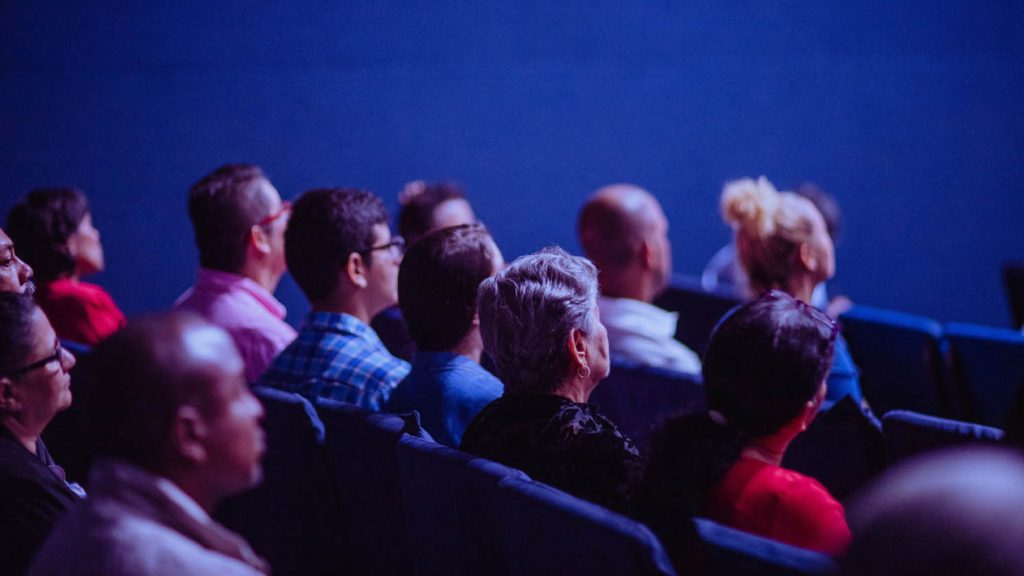The giant in-person user conferences of pre-Covid times have been replaced with virtual events, giving customers fewer opportunities to provide the sort of feedback to vendors that drives real change, writes Stephen Holmes
Nothing demonstrates quite as clearly the difference between an in-person event and its online equivalent like the reception that greets news of ‘user-requested updates’.
I’ve sat in the crowd at packed user conferences, with attendances bigger than some professional sporting events, and watched grown men well up with emotion at the mention of a new function or a command path that might save them a handful of mouse clicks each day. Each announcement is met with raucous whoops and cheers from the crowd.
So over the past couple of years, it’s been odd to see tech updates announced to the dead silence of the internet. Online, nobody can hear you scream – or whoop.
This has got me wondering what this means for the sense of community that can grow up around a CAD system. Despite attendances reaching into the thousands, those who fill the halls at user conferences tend to be a potent and vocal type of user – power users.
These are people who mainline their CAD system for 8 hours a day, and then spend extra hours in user groups, forums and training. For some of us, this devotion can seem quite alien, but those big, in-person user events are an important bonding session for a brand and its power users.
Some online events have gone to lengths to try and retain that sense of community and interact with the audience directly. Similar to social media and gaming streams, some platforms enable audience members to comment in real time via text chat as a presentation progresses. Others have set up YouTube streams for breaks between presentations, such as the Core Podcast at 3DExperience World, which allows online attendees to meet up and talk about new features, just as they would at an in-person event.
Power users have some of the best insights into how CAD systems can improve and evolve, and these communication channels are important. These are the type of loyal customers who every brand prays it will acquire. They’ve bought into the brand, they have skin in the game, and they pay their way while feeding back nuggets of information that can fuel improvements for all users.
While a glamorous user event and face time with executives are a boon to users, it’s also a space for them to air concerns, grievances and less favourable opinions
A sense of distance
However, while an online event can certainly connect people, bring in new users from the other side of the globe, and boost those all-important marketing metrics, it still leaves some distance between the crowd and the presenters.
And these brands miss out on negative feedback, too.
Courting the affections of your users is a two-way street, and while a glamorous event and face time with executives are a boon to users, it’s also a chance for them to air concerns, grievances and less favourable opinions, and an executive presenting on stage can feel this on a very personal and uncomfortable level.
The past two years have seen CAD companies double-down on the transition to cloud-based CAD systems, bolstered by a global shift during the pandemic towards virtual working and more dispersed teams. But that shift has often been met unfavourably by power users with mountains of legacy data and no easy (or cheap) way to take that with them into the proposed brave new online world.
3DExperience World this year was as much about the Dassault Systèmes cloud ecosystem as it was about its traditional Solidworks heartland, if not more so.
But with no crowd present, much of the positive and negative discourse around the event’s big announcements could only be found in online comments.
At one particular conference roundtable discussion, where questions could be put to executives via online chat, the perceived ‘filtering out’ of ‘difficult questions’ put to the panel caused palpable discord among those who had joined the session online.
A step change is on the horizon. The takeup of cloud-based CAD systems during the pandemic has skyrocketed, but everyone involved has an opinion about this shift.
The danger here is that loyal power users are going to be left feeling unloved and unheard. After all, if there’s nobody in the room when this tree falls, will the CAD companies know what kind of noises some of their most die-hard users are making?






